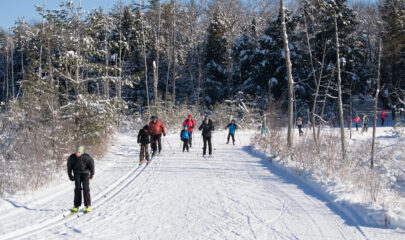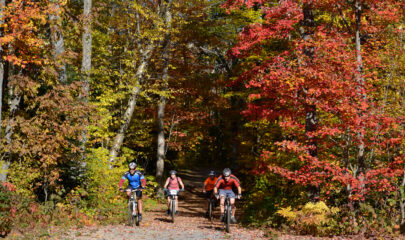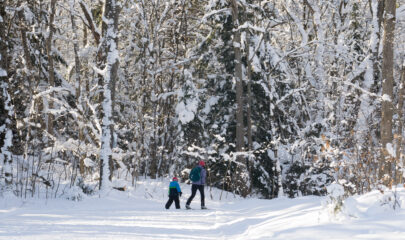Georgian Nordic Outdoor Activity Centre is the home for Fat Biking in the Parry Sound Area. With nearly 20 kilometers of dedicated tail you’re going to have a great time out there.
Please note that access to trails for riding is highly dependent on weather and trail conditions. They may also be restricted during large events. If you are not sure it is a good day to ride email us at [email protected] to confirm.
Membership and Day Passes
All riders need either a fat bike membership or day pass to ride the trails.
Fat Biking Trails
We have an extensive network of trails available for your use. Check out our winter trail map.
Trails with typically firm conditions include Lynx, Wolf, Partridge, Otter, Bear, Bear Cub, Grizzly, Fisher.
Trails with marginal conditions for fat biking include Otter, Bear, Bear Cub, Grizzly and Fisher.
Bear Cub, Grizzly, Fisher and Mink trails are snowshoe trails that are groomed intermittently and are more suitable for experienced/fit riders.
For shared trails (e.g., Bear or Otter), please stay on one side and away from the ski track. Please only ride in the marked direction of skiing.
Trail Conditions
We try to keep our trail conditions up to date but if you are not sure it is a good day to ride please email your questions to [email protected].

Rules of the Road
Fat Bikes must yield to all other users.
- Winter cycling at GNOAC is only possible through continued cooperation between cyclists, snowshoers, and skiers. Please do your part to keep fat tire cycling a viable option.
- Do not ride if the snow is too soft as it can damage the trails. As a general rule, if you have to get off and push your bike or have a hard time riding in a straight line, the snow is too soft and you should not ride.
- Give skiers a wide berth, always ride on the left side of the trails where possible.
- Helmets are mandatory.
- Lights (front and rear) and bells are highly recommended.
- Winter cycling tires must be wider than 3.5″ and tire pressure must be less than 10 psi to help with traction and minimize damage on trails.
- When crossing trails slow down, stop, and check for skiers, and do not ride in the classic ski tracks.





